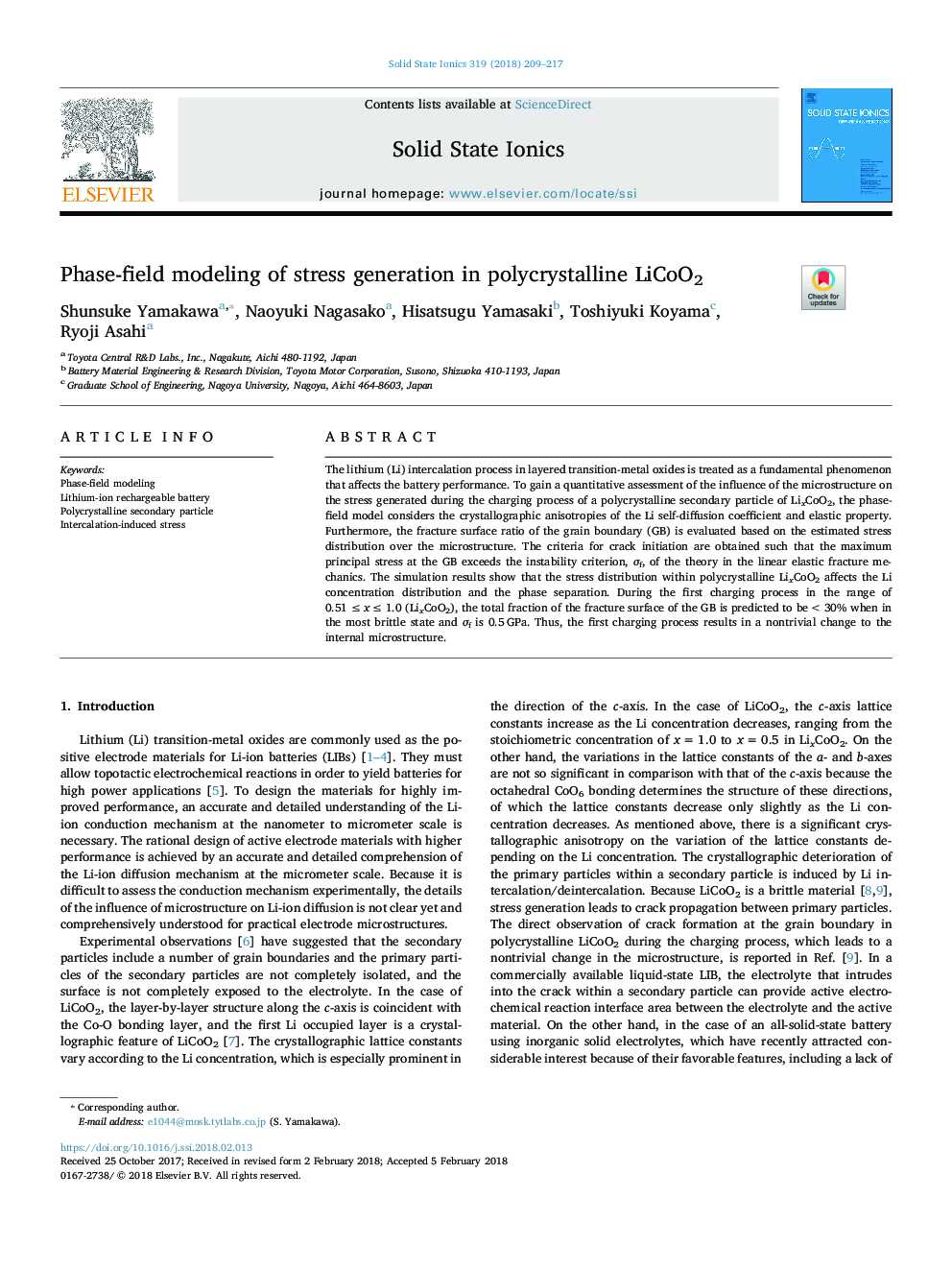| Article ID | Journal | Published Year | Pages | File Type |
|---|---|---|---|---|
| 7744470 | Solid State Ionics | 2018 | 9 Pages |
Abstract
The lithium (Li) intercalation process in layered transition-metal oxides is treated as a fundamental phenomenon that affects the battery performance. To gain a quantitative assessment of the influence of the microstructure on the stress generated during the charging process of a polycrystalline secondary particle of LixCoO2, the phase-field model considers the crystallographic anisotropies of the Li self-diffusion coefficient and elastic property. Furthermore, the fracture surface ratio of the grain boundary (GB) is evaluated based on the estimated stress distribution over the microstructure. The criteria for crack initiation are obtained such that the maximum principal stress at the GB exceeds the instability criterion, Ïf, of the theory in the linear elastic fracture mechanics. The simulation results show that the stress distribution within polycrystalline LixCoO2 affects the Li concentration distribution and the phase separation. During the first charging process in the range of 0.51â¯â¤â¯xâ¯â¤â¯1.0 (LixCoO2), the total fraction of the fracture surface of the GB is predicted to be <30% when in the most brittle state and Ïf is 0.5â¯GPa. Thus, the first charging process results in a nontrivial change to the internal microstructure.
Related Topics
Physical Sciences and Engineering
Chemistry
Electrochemistry
Authors
Shunsuke Yamakawa, Naoyuki Nagasako, Hisatsugu Yamasaki, Toshiyuki Koyama, Ryoji Asahi,
